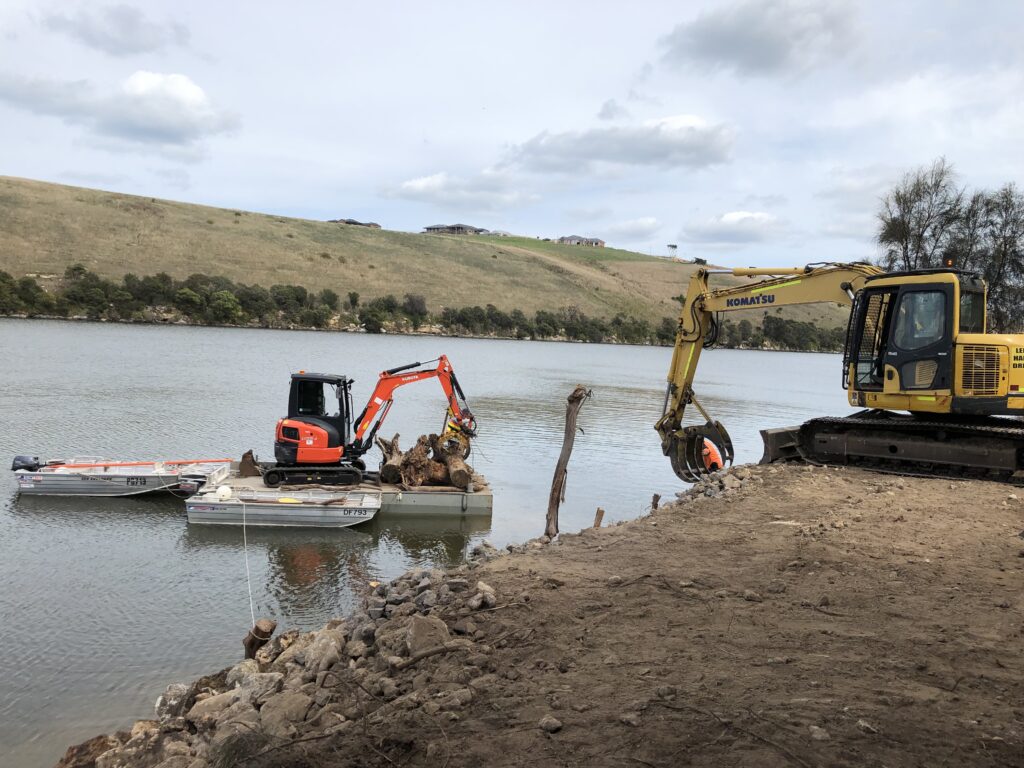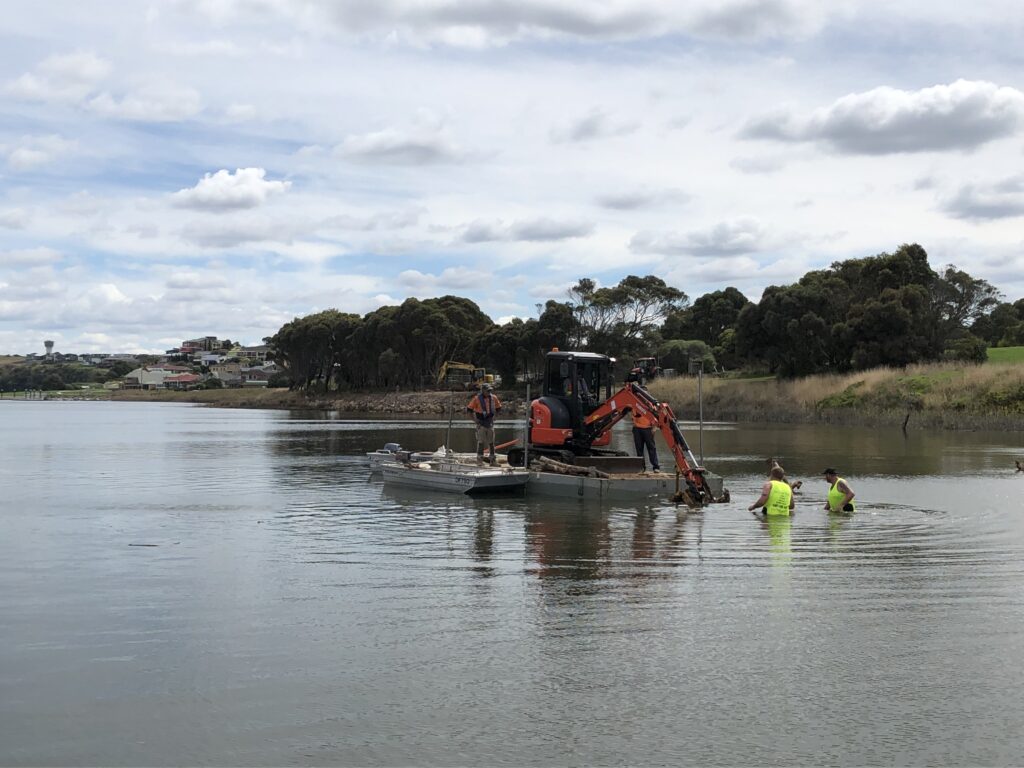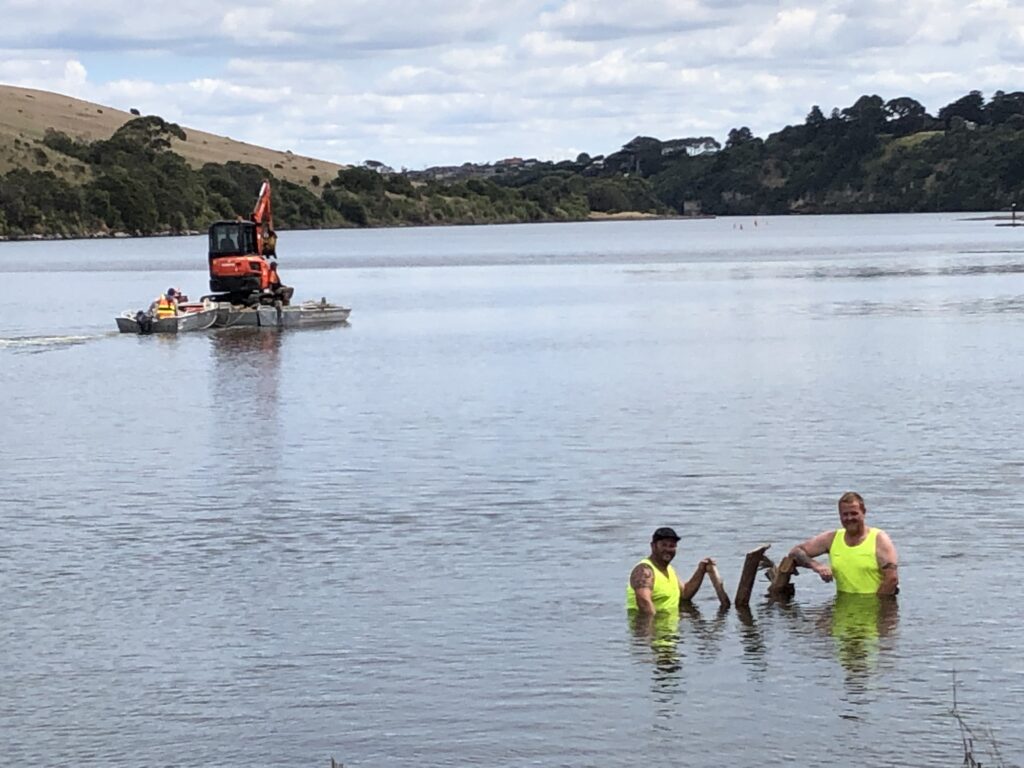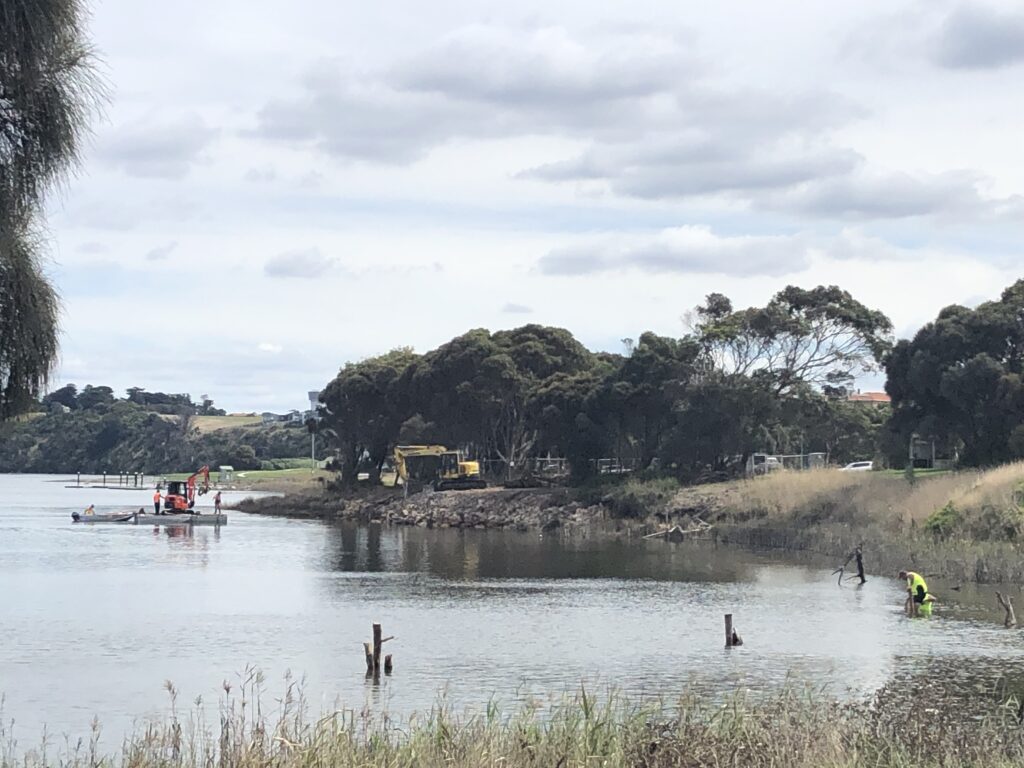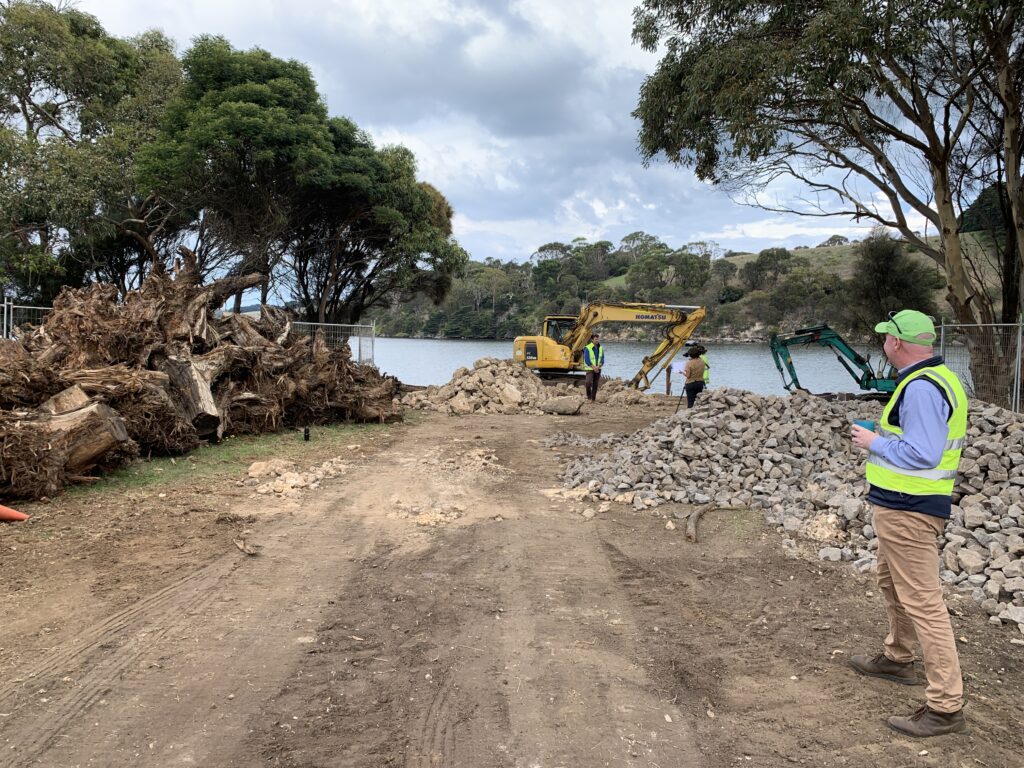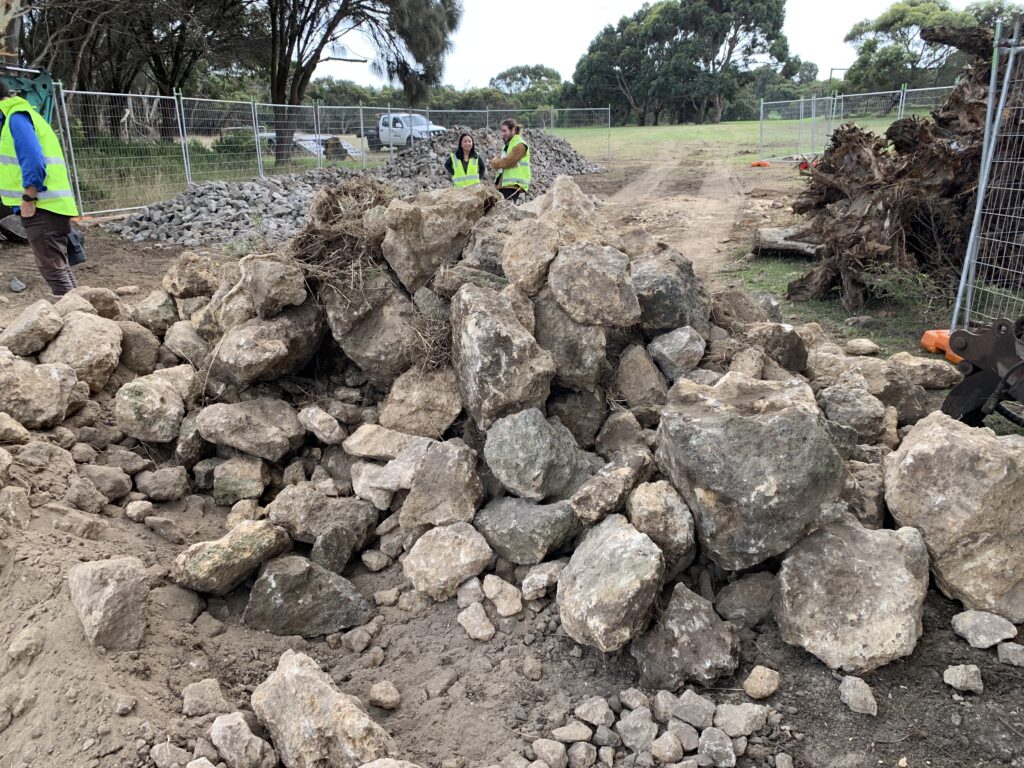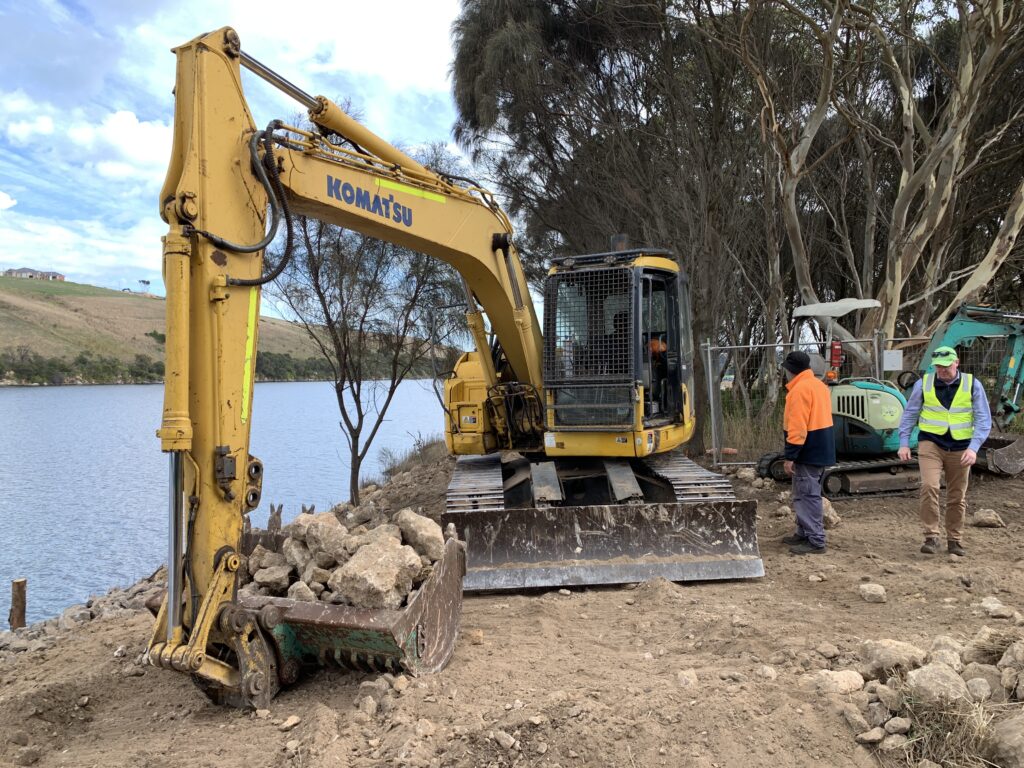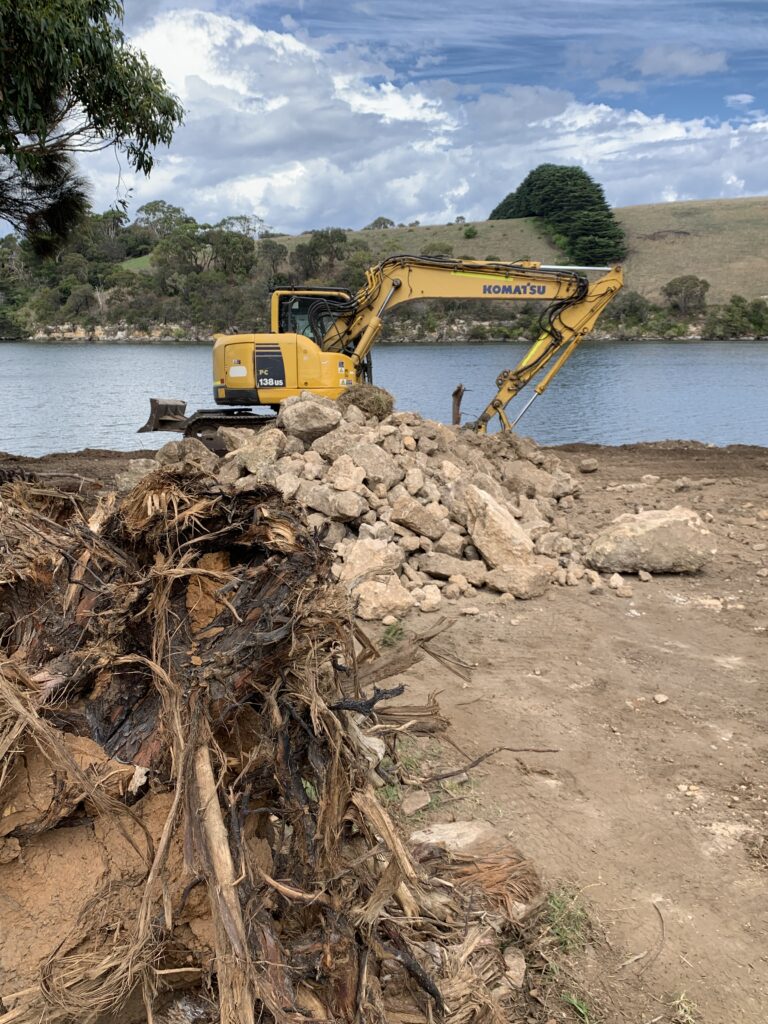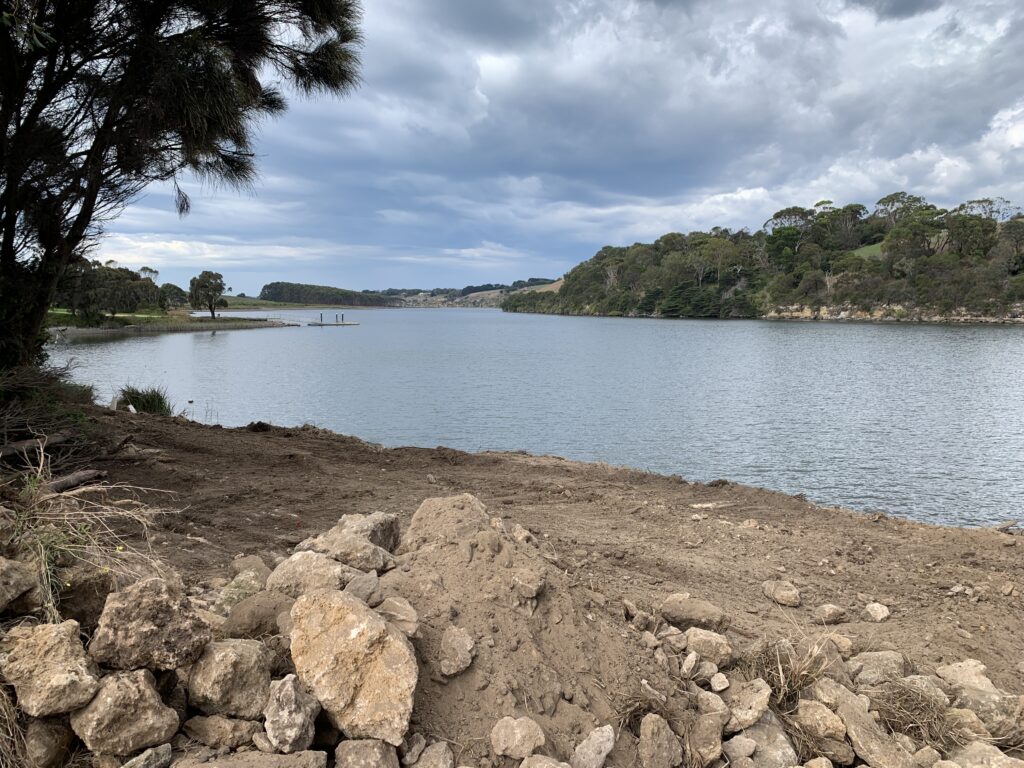Hopkins River Habitat
This month the Glenelg Hopkins CMA and local contractors will begin to place fish habitat hotels and salvaged root balls into the Hopkins River.
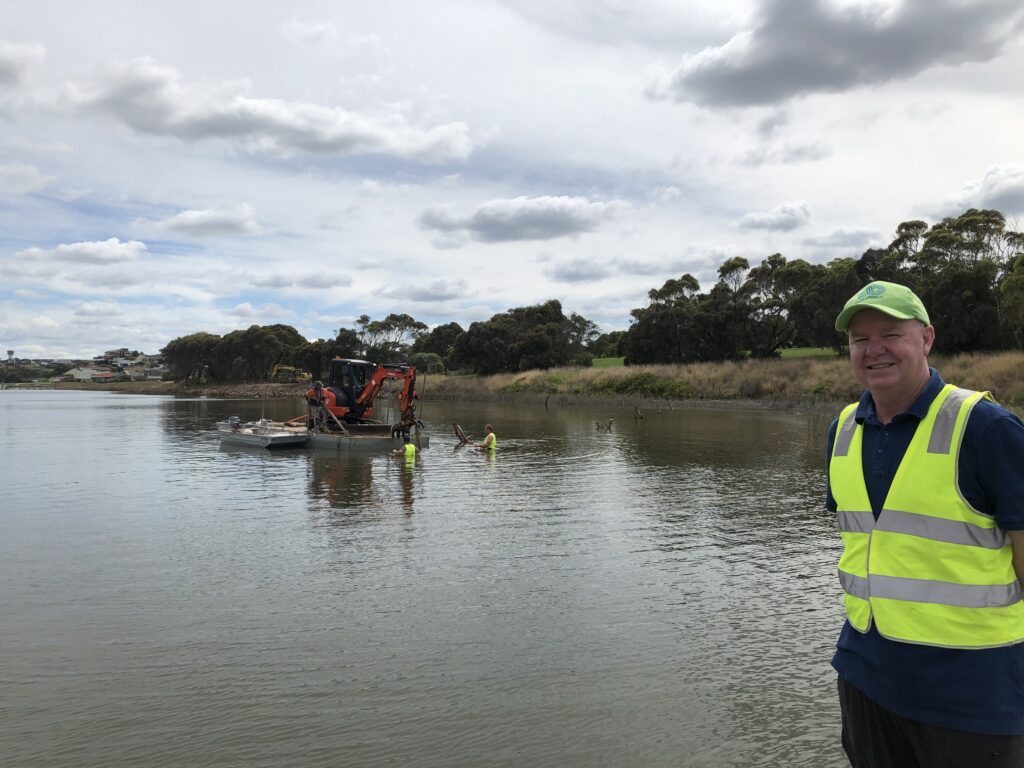
Habitat in the Hopkins is part of a larger effort to restore fish habitat on coastal waterways from Warrnambool through to Portland.
Glenelg Hopkins CMA received $306,795 of funding through the Australian Government’s Fisheries Habitat Restoration Program to complete this project.
Habitat placed in the river will include root balls, rock, and fish hotels, Glenelg Hopkins CMA Senior River health Officer, Stephen Ryan, said.
“The root balls have been secured from Bushfire Recovery Victoria (BRV), in partnership with Johns Lyng Group, which has been supporting the clean-up and recovery work for the owners of private property damaged by the storms and floods that occurred in June 2021 following fires the year before,” Mr Ryan said.
“Trees were damaged by the fires, and then storms knocked them down. BRV have paid for transport costs from several green waste treatment sites at Romsey, Yinnar and Coldstream, in order to get the root balls and logs to their new homes for them to be used for good environmental outcomes.”
Mr Ryan said small brush piles will also be installed in the river to provide important habitat for juvenile fish species and water bugs.
The coastal waterway areas, also known as estuaries, are important parts of river systems as they provide a unique water environment for fish. Project work to date as part of this has included fish surveys to collect species information before the habitat is placed in the waterway, Mr Ryan said.
“The saltwater and freshwater interaction creates a unique habitat which is important for many recreational fishing species.
“The Hopkins River is a popular local fishing destination, much of the banks of this waterway have been cleared of native vegetation, reducing the amount of timber habitat available to fish,” he said.
